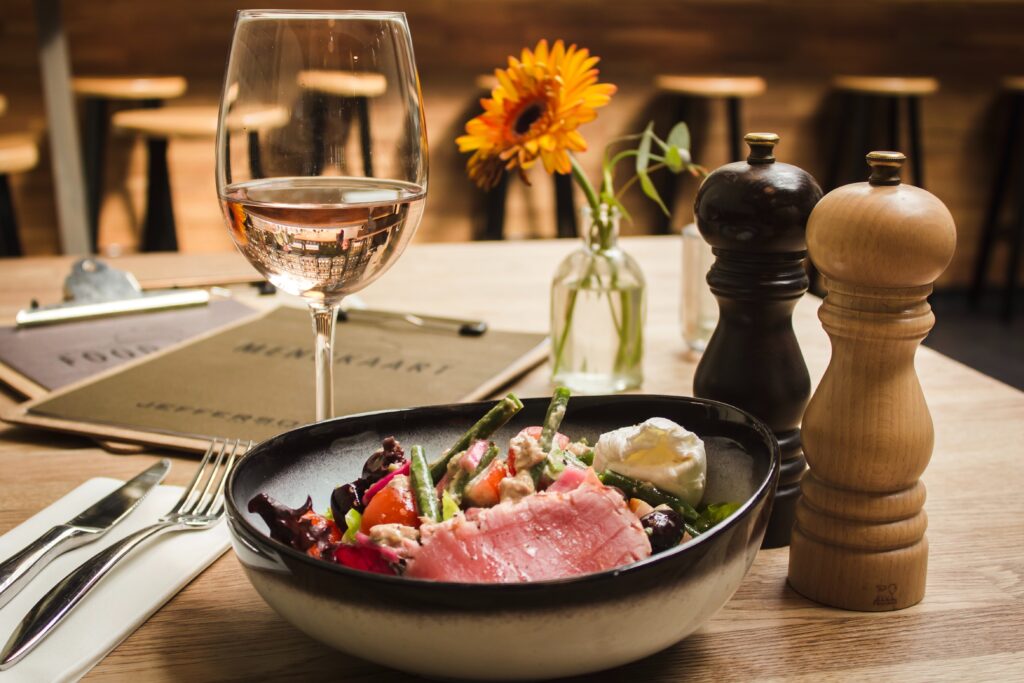Wine tasting is not just a pastime for sommeliers and connoisseurs; it’s a sensory experience that anyone can enjoy and appreciate. Whether you’re new to wine or looking to deepen your understanding, this beginner’s guide to the art of wine tasting will help you unlock the secrets of this fascinating world. So, grab a glass, and let’s embark on a journey of taste, aroma, and discovery.
- The Importance of Observation:
The first step in wine tasting is to observe the wine’s appearance. Pour a small amount of wine into a clear glass and hold it up against a well-lit background. Take note of these visual aspects:
- Color: Is the wine red, white, or somewhere in between? Observe its intensity, ranging from pale to deep.
- Clarity: Is the wine clear or cloudy? Clarity can indicate age or filtration.
- Viscosity: Swirl the wine gently and observe the “legs” or “tears” that form on the inside of the glass. These can provide clues about alcohol and body.

- The Aroma Experience:
A significant part of wine tasting involves the aroma, which can reveal a wealth of information about the wine’s character. To get the most out of this step:
- Swirl the Wine: Swirling the wine in your glass helps release its aromas. Place your nose near the rim of the glass as you do this.
- Sniff Thoughtfully: Take your time to inhale the wine’s scents. Note any fruit, floral, herbal, or spice notes. Try to identify these individual aromas.
- Consider Intensity: Think about how pronounced the aromas are. Are they subtle and delicate or bold and powerful?
- The Art of Tasting:
Now, it’s time to taste the wine. Take a small sip and let it coat your palate. Pay attention to these aspects:
- Flavor: What flavors do you detect? Consider fruit, spice, earthy, or other tasting notes. Try to describe them in as much detail as possible.
- Sweetness: Is the wine sweet, dry, or somewhere in between? The perception of sweetness can vary, even in dry wines.
- Acidity: Think about how the wine feels on your tongue. Does it make your mouth water? High acidity can provide freshness and balance.
- Tannins: For red wines, notice the presence and texture of tannins. Are they smooth or astringent? Tannins can affect the wine’s structure.
- Finish: Consider the wine’s aftertaste or finish. Is it short and crisp or long and lingering?
- Evaluating Balance and Complexity:
Wine tasting is not just about identifying individual components; it’s also about assessing the wine’s overall balance and complexity. A well-balanced wine will have harmony among its elements, while complexity indicates layers of flavors and nuances. - Take Notes and Reflect:
Keep a wine journal or tasting notes to record your observations. Over time, this will help you recognize patterns and develop your palate.
Wine tasting is a skill that can be honed over time, and the key is practice. Whether you’re sipping a glass of red, white, or sparkling wine, the art of wine tasting allows you to appreciate the nuances and stories behind each bottle. So, the next time you pour a glass, take a moment to savor the experience fully, and enjoy the journey of discovering the diverse world of wine. Cheers to your newfound appreciation for the art of wine tasting!



